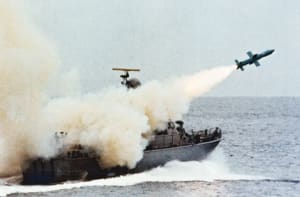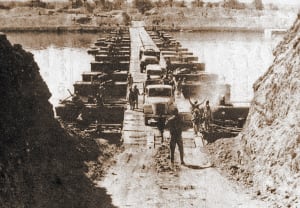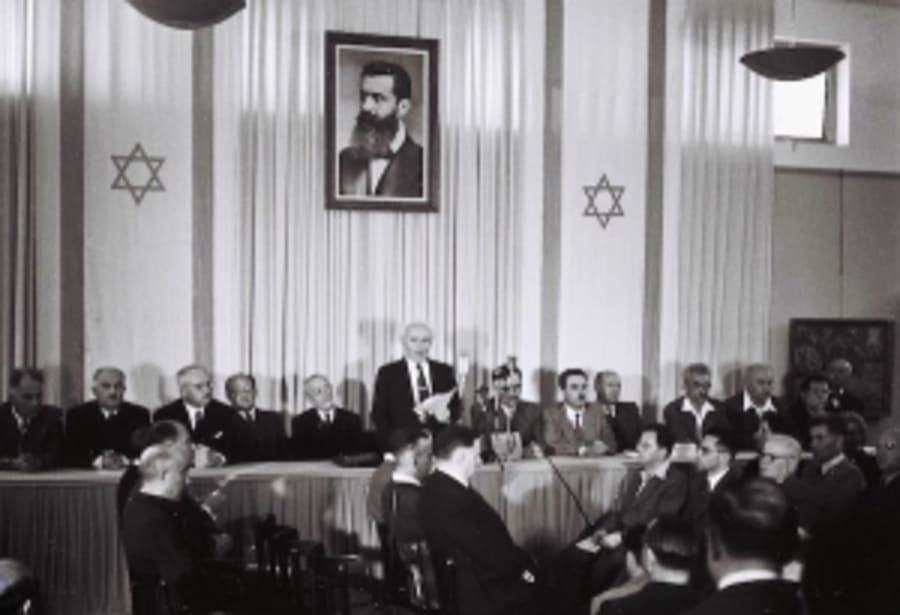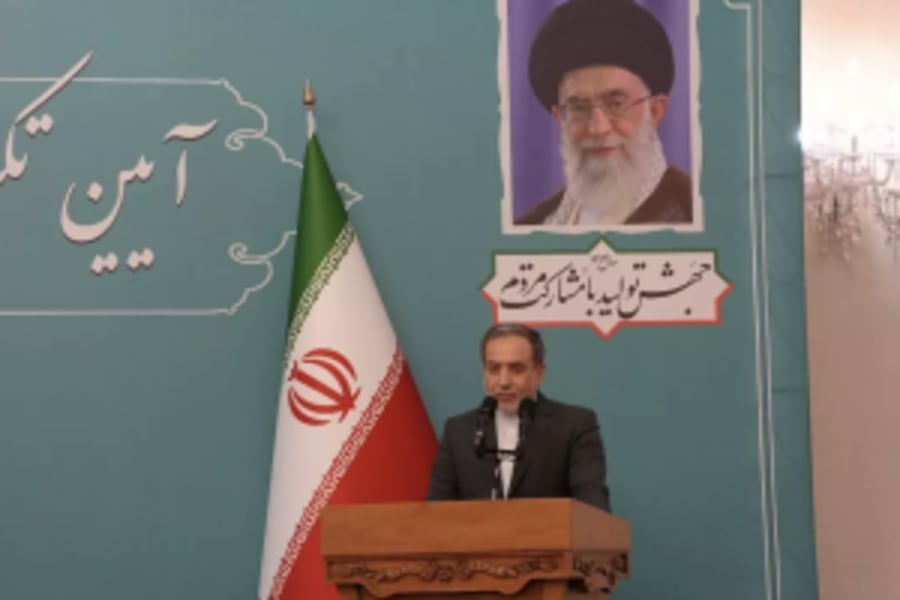Timeline of the modern history of the wars in the Land of Israel

In this timeline, I’ve tried to cover all the important military and diplomatic events taking place from the 1880s until today in the land of Israel, to hopefully help readers understand the current conflict in a longer historical context.
I deliberately say “the Land of Israel” and not “the State of Israel,” as I use this term to refer to the entire area from the river to the sea, no matter which government rules it.
This area is often also referred to as Palestine, Canaan or the Holy Land. At least until 1948, these were merely different names for the same area.
Because I am an Israeli, I will present the information from an Israeli perspective. I’ve tried to be relatively fair to “the other side” and acknowledge their pain, but you can probably accuse me of not being 100% objective. I believe pretending to be objective when you’re really not is dishonest, at best, and deceitful, at worst. It’s also easy to fall into the trap known as the “false balance fallacy,” i.e. presenting two sides as if they are equally valid when they are really not.
View this timeline for what it is: A description of historical events as seen from the Israeli point of view. I believe we represent the “good side” and that we’re on the right side of history but I’m also painfully aware that not everything carried out by my country or in its name has been moral and just.
The timeline is by no means exhaustive, but I believe and hope I’ve touched upon the main issues. You are invited to investigate any of these events further and learn more. From 1995 and onwards, a lot of the descriptions come from my own memories.
There have always been Jews in Israel. In the 1800s, they were living in poverty under the Ottomans who saw them as inferior. They were required to pay the ‘jizya,’ the infidel tax, and they were often arrested without trial. Most were very religious, and many lived on ‘chaluka’ (donations from European Jews). There was very little self-reliance, and diseases and poverty were prevalent. Many of the Jews were old people who came to Israel to live their last few years and be buried here. From the 1830s, Jews were considered the majority of Jerusalem, but they still comprised less than 5% of the population of the Land of Israel.
However, the different nationalist movements in Europe at the time gave birth to Zionism, and combined with harsh persecution against Jews throughout Europe, the first Zionist immigration waves started to arrive.
1882 – The first Zionist immigration wave arrives, doubling the Jewish population of the land, from 25,000 people to 55,000. They still represented less than 10% of the population. They establish new Jewish cities and self-reliant agricultural settlements.
1904 – The second Zionist immigration wave begins, which brings another 35,000 Jews to the land. They start schools and hospitals and begin to use Hebrew consistently, rather than Yiddish.
1909 – The first Kibbutz is founded, as is the first Hebrew city, Tel Aviv. The Jewish population of Israel has risen to 15%.
1917 – Great Britain issues the Balfour Declaration to secure Jewish support in World War I. At the same time, Lawrence of Arabia also envisioned an independent Arabia, in which Emir Faisal would rule a nation that stretched from Palestine to Kuwait, with Damascus as its capital.
1918 – Emir Faisal makes an agreement with Chaim Weizmann, then-president of the Zionist Organization for Jewish-Arab cooperation, in which Zionists will have a Hebrew-speaking autonomy in southern Arabia.
1920 – France and Britain carve up the Middle East, and force Feisal out. He becomes king of Iraq, while France administers Syria and Lebanon. The area of Israel becomes the British Mandate of Palestine.
1921 – Haj-Amin al-Husseini becomes the mufti of Jerusalem. He issues Islamic decrees permitting Muslims to kill Jews, and declares a holy war against Zionism, claiming that the Jews wish to occupy Jerusalem and destroy al-Aqsa to build the third temple.
1929 – Arabs incite violent riots throughout Israel resulting in 133 Jews killed and 339 injured. The British decide to evacuate 17 Jewish communities by force as they cannot ensure their safety. Some of these communities are later reinstated but the Jewish communities of Gaza, Jenin, Nablus and Tul-Karem are not.
1933 – Adolf Hitler comes to power in Germany, and another Zionist immigration wave brings over 200,000 Jews to Israel; the percentage is still around 15%
1936 – The Arab Revolt against the British and the Jews begins; they violently attack Jewish communities and also boycott Jewish businesses. This only strengthened Zionism, as it forced the Jews to become more self-reliant.
1937 – The British Peel Commission concludes that the Jews have effectively everything they need to run their own state and suggest dividing the Land of Israel into an Arab and a Jewish state, roughly along the lines of populations.
1939 – As Nazi persecutions in Europe grow worse, the British limit Jewish immigration in order to appease the Arabs. At the same time, Haj-Amin al-Husseini flees to Iraq where he (probably) takes part in inciting the Nazi-inspired Farhoud riots against Jews before he continues to Germany to meet with Hitler. He visits Auschwitz and sees up close how the Germans “solve the Jewish problem.”
1942 – As the German troops in North Africa come closer, and the German troops in Southern Russia prepare to reach the Middle East through the Caucasus, Haj-Amin al-Husseini prepares the ground to build a concentration camp near Jenin once the Nazis have occupied Palestine. German Colonel Rauf is waiting in Athens with 24 men to arrive in Palestine and give instructions and knowledge about how to operate a concentration camp. At the time there are half a million Jews in Israel. Not aware of these plans, the Jews prepare bunkers on Mount Carmel, awaiting a last stand, like Masada. When the British defeat the Germans in El-Alamein in Egypt, all of the plans fall through.
1945 – Allies are victorious in WW2, but the British continue to limit Jewish immigration to Israel despite the overwhelming need. Many Jews enter illegally, with aid from Zionist organizations.
1947 – The British ask the newly-formed United Nations to solve the question, and the UN votes for a partition plan roughly based on a population similar to the Peel Commission. By now, Jews make up 30% of the population, but receive 55% of the territory in the plan. The proposed Jewish state would have only a very slight Jewish majority, but the Zionist organizations agree, assuming that the arriving Jewish refugees will solve the demographic issue. The different Jewish armed forces and militias – Haganah, Palmach, Etzel, and Lechi – fight against attacks from the local Arabs, while the British involvement is minimal.
1948 – The British leave without implementing any of the UN partition plan, letting the area spin off into a civil war. Israel declares independence but without defining the borders, and five Arab armies invade the following day. Despite all odds, Israel successfully defends and secures, not only the borders of what was promised in the partition plan but additional land, as well, including the western half of Jerusalem. Out of the 800,000 Arabs who lived within the borders of the new Jewish state, some 750,000 either flee or are evicted by force under the fog of war, today referred to as the “Nakba.” There is no proof but today most people, including Israelis, agree that the Jewish leadership knew about the evictions and turned a blind eye.
1949 – A ceasefire is negotiated but instead of declaring an Arab nation of Palestine, Jordan and Egypt keep the land they occupied. Israel seizes 78% of the total from the river to the sea, and the remaining areas are established with the names “West Bank” and “Gaza Strip.” Egypt keeps the Gaza Strip under military occupation, while Jordan annexes the West Bank. Haj-Amin al-Husseini attempts to lead a Palestinian government in Gaza but is eventually arrested by Egypt and the government is dissolved. Due to immigration, the Jewish population of Israel grows from 700,000 to 1.1 million, roughly 80% of the entire population of the new Jewish state. The first elections are held.
1949 – 1956 – Constant attacks by Arab Fedayeen militias from Syria, Jordan and Egypt into Israel cause the Israeli government to conduct controversial “reprisal operations” against Jordanian and Egyptian villages.
1956 – The Sinai War. Britain and France are angry with Egypt’s nationalization of the Suez Canal and choose to go to war. They ask Israel to conduct a surprise attack on Egypt so they could use it as an excuse to intervene and secure the Suez Canal. Israel is eager to stop the Fedayeen attacks, and quickly occupy the Gaza Strip and the entire Sinai Peninsula. After that success, Israel has no reason to continue the conflict and agrees to the ceasefire proposal offered by the UN, negotiated by the United States and the Soviets, which includes giving back the territory to Egypt in return for UN peacekeeping troops on the Sinai Peninsula. The UN presence makes the British and French intervention redundant and exposes their colonial ambitions; their positions as superpowers in the Middle East give way to the US and the Soviets.
1964 – Establishment of the Palestine Liberation Organization (PLO), in East Jerusalem in Jordan. A secular and nationalistic organization seeking to erase Israel and create an Arab state of Palestine. Haj-Amin el-Husseini tries to establish a Muslim rival but fails. The PLO conducts various attacks against Israel from neighboring countries. The PLO, as well as Israel’s enemy neighbors, get support from the Soviets, turning the Middle East into the arena for the worldwide Cold War.
1967 – The Six-Day War. Egypt threatens Israel and cuts it off from international trade in the Red Sea, and expels the UN troops in Sinai. Israel prepares for a multi-front war and initiates a full-scale surprise attack against the airports of the Egyptian army, completely destroying the Egyptian Air Force in one day, and eventually again occupying the Gaza Strip and the Sinai Peninsula. Using international channels, Israel asks Jordan to stay out of the war, but when Jordan attacks, Israel fights back and occupies the West Bank. In addition, due to the constant shelling of Israeli communities in the north by the Syrians from the Golan Heights, Israel seizes this opportunity to occupy a part of the Syrian Golan Heights – to secure the strategic position of Mount Hermon. When the fog of war subdues, the army has conquered land that was many times the size of Israel proper. The government decides the Sinai Peninsula and the Golan Heights are to be given back in exchange for peace, while East Jerusalem was annexed and declared Israel’s eternal undivided capital forever. A decision on what to do with the Gaza Strip and the West Bank was pushed to the future. The Arab countries meet in Khartoum where they together declare a resolution of refusal to ever recognize or negotiate peace with Israel. The Suez Canal becomes the border between Israel and Egypt, with troops on both sides of the shore; a situation that disturbs world trade significantly.
1968 – 1972 – The War of Attrition. Constant small attacks from Egypt against the Israeli military in Sinai, with support from the Red Army, are conducted in hopes of exhausting Israel. Situation reaches a stalemate.
1970 – The Jordanian king expels the PLO from Jordan while killing a lot of Palestinians in a conflict called “Black September.” The PLO moves to southern Lebanon where they establish a presence among Palestinian refugees in refugee camps. The PLO is unsuccessful in getting Palestinians in Gaza or the West Bank to rise up against Israel.
1972 – All Israeli athletes in the Munich Olympics are taken hostage by PLO-affiliated terrorists. Unsuccessful attempts to rescue them result in everyone being killed.
1973 – The Yom Kippur War. Egypt and Syria both attack Israel in a sudden surprise attack with many dead. Jordan did not take part this time. After the initial blow, Israel strikes back against both, threatens both Cairo and Damascus. The UN intervenes and calls for a ceasefire. No borders change, but it shakes Israeli society, convincing many Arab nations that they can’t beat Israel, and it breaks the stalemate on the Suez Canal.
1974 – The first Jewish settlements on the West Bank meet opposition from the government since the area is considered occupied. The settlers object, saying their forefathers lived there before 1948 and were expelled by the Jordanians, and that it’s the Jewish biblical heartland. Opposition leader Menachem Begin takes the side of the settlers. In the same year, PLO head Yasser Arafat speaks to the UN in a move many saw as recognizing the terror organization PLO as a representative for the Palestinian people.
1976 – The Entebbe Operation. A plane with Israelis is hijacked by Palestinian and German Marxist terrorists and flown to Entebbe in Uganda, where they are under the protection of Ugandan Dictator Idi Amin. Israel secretly flies an IDF commando unit to Entebbe and frees the hostages by force.
1977 – Menachem Begin is elected prime minister of Israel, and the first settlements are recognized. In many cases, descendants of Jews expelled in 1948 return to where they used to live. Other new settlements are established.
1979 – Peace agreement with Egypt, and return of the Sinai Peninsula, including the evacuation of Israeli settlements. Egypt refuses to take back the Gaza Strip. Islamic Revolution in Iran.
1982 – After numerous rocket attacks, Israel goes to war to rid Lebanon of the PLO and the IDF reaches as far as Beirut. This is the first Israeli war that didn’t have the full support of the Israeli public and the IDF becomes entangled in the Lebanese Civil War. PLO eventually leaves Lebanon and finds refuge in Tunisia, while Israel withdraws but keeps a security zone in southern Lebanon where the IDF will until 2000. Massacres occur in Palestinian refugee camps Sabra and Shatila, not perpetrated but neither prevented by the IDF. An Israeli investigation lays responsibility on Defense Minister Ariel Sharon and he is deposed from his position.
1985 – Iran sets up Hezbollah as an armed militia in southern Lebanon to fill the vacuum left by PLO. Hezbollah fights against Israeli positions.
1987 – First Intifada breaks out spontaneously, starting in Gaza, mostly expressed by rock-throwing, road-blocking, and tire-burning, with harsh Israeli responses including curfews, fines, and the shutting down of Palestinian universities. PLO gets involved from Tunisia on behalf of the Palestinian people. Hamas is founded as an Islamist rival to the secular PLO.
1988 – Jordan renounces its claims on the West Bank.
1991 – Israel is attacked by Iraqi scud missiles during the Gulf War but stays out of the war to allow the United States to go to war against Saddam Hussein.
1993 – First Intifada ends with the Oslo Accords, where the PLO is invited to set up Palestinian autonomy in the West Bank and Gaza Strip. The occupied territories are divided into A, B, and C-areas, where the A-areas are under full Palestinian control and self-rule, (mostly large Palestinian cities) while the C-areas include all settlements and stay under Israeli control, and B-areas are a middle ground. Slowly, more and more areas are moved from C to B to A. The PLO is allowed to operate and keep government offices in East Jerusalem. Movement restrictions for Palestinians are lifted.
1994 – Hamas suicide bombers use the lifted movement restrictions to carry out attacks against Israeli civilians, most notably a full bus in the middle of Tel Aviv that kills more than 20 Israelis. Oslo Accords paves the way for a peace treaty with Jordan.
1995 – Prime Minister Yitzhak Rabin is murdered by a Jewish nationalist who opposes the Oslo Accords, but is widely condemned even by the settler far-right. The peace process continues as normal.
1996 – Two huge bus bombings in central Jerusalem and one in Tel Aviv, cause more Israelis to doubt the Oslo process. Right-wing leader Benjamin Netanyahu, who had protested Oslo, wins the elections, but continues the process, albeit a bit more restrictive. Arafat wins the first elections in the Palestinian Authority (PA).
2000 – After defeating Netanyahu, Ehud Barak becomes prime minister and unilaterally evacuates all military presence from southern Lebanon. He negotiates with Arafat about a Palestinian state in the Camp David talks, offering him 98% of the entire West Bank, all of the Gaza Strip, and East Jerusalem as a capital, including the Muslim and Christian quarters of the Old City. Arafat refuses for unknown reasons. He launches the Second intifada, where armed and US-trained Palestinian police turn against Israel, and Hamas terrorists are released from all Palestinian prisons. He uses opposition leader Ariel Sharon’s visit to the Temple Mount as an excuse, but it was later proved that it was pre-planned.
2001 – Second intifada is at its height. Numerous terror attacks against Israel are perpetrated by both the PLO’s Al-Aqsa Brigades and the Hamas terror organization, killing hundreds of Israelis. Even the Jerusalem neighborhood Gilo is under fire. Israeli popular opinion swings against the peace process. All the PLO offices in Jerusalem are closed for good, and harsher movement restrictions are imposed upon Palestinians.
2002 – After a terror attack kills dozens at a Passover Seder in Netanya, in central Israel, Prime Minister Sharon launches ‘Operation Defensive Shield’ in the West Bank where, for the first time since the Oslo withdrawals, the IDF enters A-areas to arrest terrorists and destroy terror infrastructure. The building of the separation wall barrier begins. Arafat is besieged by IDF tanks in his home in the PA capital of Ramallah. Hamas is almost totally wiped out from the West Bank but still has a stronghold in Gaza.
2004 – Arafat dies and is succeeded by Mahmoud Abbas.
2005 – Second Intifada ends as Sharon and Abbas reach an agreement on lowering hostilities and adopting a road map for peace. Israel adopts a policy of unilateral withdrawal from occupied territories in the Gaza Strip and evacuates all settlements by force, hoping that the PA will use the opportunity to show their ability to self-rule, setting a precedent for the West Bank. Critics claim Israel’s withdrawal will only enable the Palestinians to arm themselves and move the front closer to Israeli cities.
2006 – Ariel Sharon suffers a stroke and is incapacitated (he stays in a coma until he dies in 2014). Ehud Olmert replaces him. The second (and so far, the last) elections in the Palestinian Authority results in Hamas gaining more seats in the parliament, and the position of prime minister. Hamas kidnaps Israeli soldier Gilad Shalit into Gaza, and Hezbollah kills three soldiers and kidnaps their bodies on the Lebanese border. Israel enters the Second Lebanon War, which ends with guarantees and UN peacekeeping forces in the border area.
2007 – Hamas violently takes over the Gaza Strip and murders or expels all PLO officials. In return, Abbas fires all Hamas-affiliated members of his government in the West Bank. Israel imposes a blockade against the Gaza Strip. From this moment, there is a permanent disconnect between the West Bank and the Gaza Strip for the first time.
2008 – Hamas shoots rockets against Israel and Israel goes to war against terror infrastructure in Gaza. Prime Minister Olmert negotiates with Abbas about an independent Palestinian state, offering almost everything, similar to Barak in 2000, but they can’t reach an agreement.
2011 – Israel releases thousands of terrorists to free Gilad Shalit. Among those released is notorious murderer Yahya Sinwar, who soon after takes control of the Hamas terror group in Gaza.
2012 – Another round of rocket attacks from Gaza, and Israeli air raids in response. For the first time, Tel Aviv and Jerusalem are attacked by rocket fire from Gaza.
2013 – Israel conducts its last (so far) serious attempt at peace talks with the Palestinian Authority but they lead nowhere.
2014 – The most serious round of war between Israel and Hamas in the 2010s, with numerous rocket attacks and Israeli retaliations, including Israeli soldiers entering Gaza. Underground tunnels, intended to secretly transport terrorists into Israel, are discovered for the first time and destroyed by the IDF.
2021 – Another round of war against Hamas, including rocket fire against Israeli population centers, and Israeli air raids in response.
2022 – Another round of war, but this time only against “Palestinian Islamic Jihad” in the Gaza Strip. Hamas stays out of the fight, which Israel takes as a sign that Hamas has calmed down and is focusing on peacefully ruling their population. Israel eases blockade restrictions in an attempt to appease Hamas.
2023 – Hamas conducts a surprise attack against Israel with rocket fire and notably thousands of terrorists and accomplices invading on Oct. 7, meticulously planned for years by Yahya Sinwar with Iranian support and training. It is the most devastating brutal attack against Israel in history, with over 1,200 dead and over 240 Israeli and foreign hostages abducted into Gaza, including women, children and the elderly. Israel declares war (Swords of Iron) and conducts a ground operation of the Gaza Strip War to eradicate the Hamas terror organization once and for all. By the end of November, some Israeli hostages are released but it is believed 136 remain in captivity - 26 of them killed. The war is still ongoing.

Tuvia is a Jewish history nerd who lives in Jerusalem and believes in Jesus. He writes articles and stories about Jewish and Christian history. His website is www.tuviapollack.com
You might also like to read this:

















